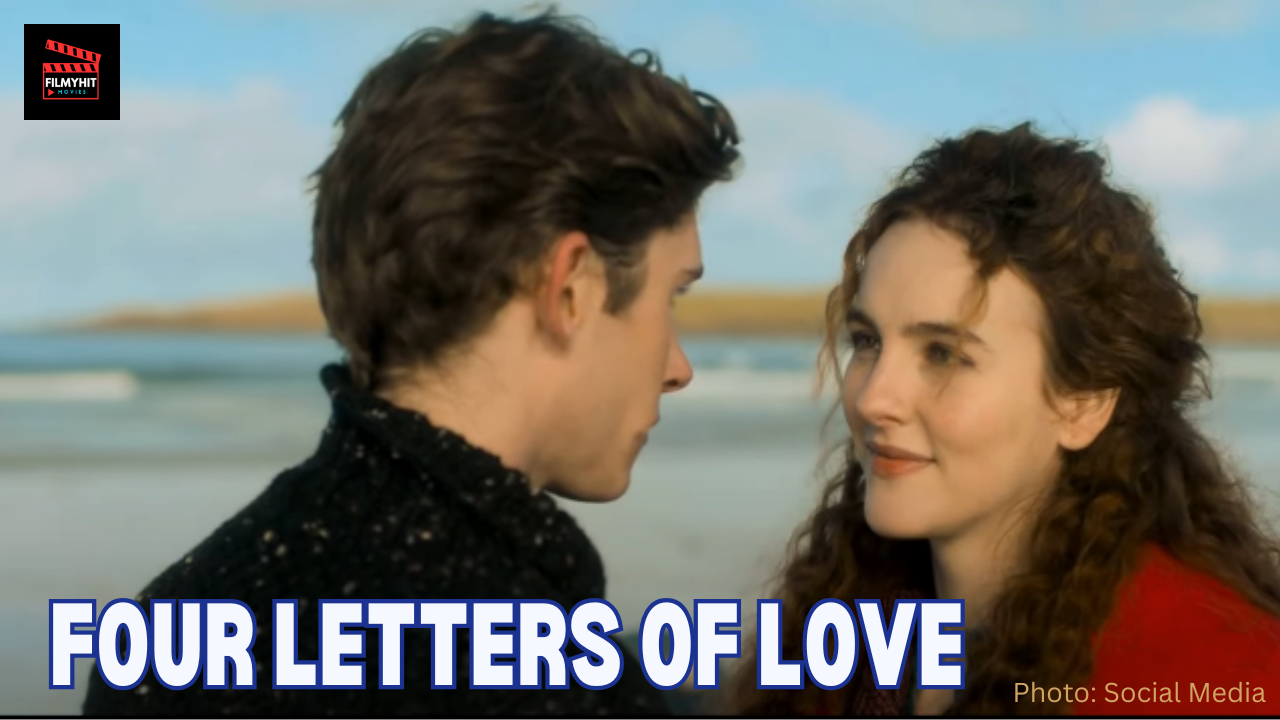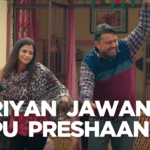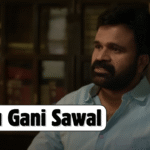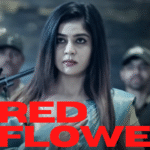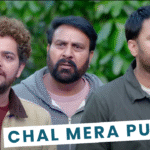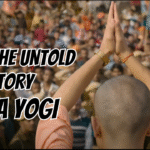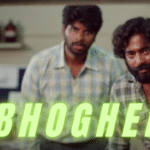As an Indian moviegoer who cherishes stories that weave emotion, culture, and breathtaking visuals, Four Letters of Love is a cinematic experience that feels like a warm embrace wrapped in Ireland’s misty landscapes. Directed by Polly Steele and adapted from Niall Williams’ 1997 bestselling novel, this romantic drama, released on July 25, 2025, brings together a stellar cast—Pierce Brosnan, Helena Bonham Carter, and Gabriel Byrne—alongside rising stars Fionn O’Shea and Ann Skelly. For Indian audiences who love films like Dilwale Dulhania Le Jayenge or Rehnaa Hai Terre Dil Mein, where love battles fate and family, this film strikes a universal chord while offering a distinctly Irish flavor.
A Tale of Fated Love and Family Ties
Set in the early 1970s along Ireland’s rugged western coast, Four Letters of Love tells the story of Nicholas Coughlan (Fionn O’Shea) and Isabel Gore (Ann Skelly), two young souls destined to be together but separated by life’s unpredictable twists. The narrative unfolds like a poetic ballad, blending themes of love, faith, and destiny that resonate deeply with Indian sensibilities, where family and fate often shape romantic journeys.
Nicholas’ father, William (Pierce Brosnan), is a civil servant who experiences a divine epiphany, prompting him to abandon his job and family to pursue painting on Ireland’s wild coast. This decision leaves his wife, Bette (Imelda May), and son to navigate life alone, mirroring the sacrifices and struggles seen in Indian family dramas. Meanwhile, Isabel lives an idyllic life on a neighboring island with her poet-schoolteacher father, Muiris (Gabriel Byrne), and intuitive mother, Margaret (Helena Bonham Carter). But tragedy strikes when Isabel’s brother, Sean, suffers a paralyzing accident, leading her parents to send her to a convent school on the mainland. The parallel journeys of Nicholas and Isabel, filled with heartache and longing, build toward a miraculous reunion that feels like a Bollywood-style twist of fate.
Performances That Touch the Heart
The cast is a treasure trove of talent. Pierce Brosnan, known to Indian audiences as the suave James Bond, brings a raw, introspective depth to William, a man chasing a divine calling at the cost of his family. His attempt at an Irish accent, though occasionally uneven, doesn’t detract from his emotional sincerity. Helena Bonham Carter, a name familiar from Harry Potter and The Crown, shines as Margaret, delivering a performance that’s both tender and commanding. Her Irish accent, and even a scene where she speaks Irish, adds authenticity, reminiscent of the cultural pride we see in Indian cinema’s regional storytelling. Gabriel Byrne, as the poetic Muiris, complements Bonham Carter beautifully, their chemistry evoking the warmth of long-married couples in films like Hum Dil De Chuke Sanam.
Fionn O’Shea and Ann Skelly, as the young lovers, are the soul of the film. O’Shea’s earnest portrayal of Nicholas captures the anguish of unfulfilled love, while Skelly’s spirited Isabel brings a vibrant energy that Indian audiences, accustomed to strong heroines like Deepika Padukone’s Mastani, will admire. Their chemistry, though slow to build, culminates in moments that feel like a monsoon rain of emotions—intense and unforgettable.
A Visual and Emotional Feast
The film’s cinematography, shot in locations like Murlough Bay in County Antrim and Dunfanaghy in County Donegal, is a love letter to Ireland’s landscapes. The golden beaches, azure seas, and endless skies lend a fairytale quality that’s as mesmerizing as the scenic beauty in Indian films like Chennai Express or RRR. Director Polly Steele uses these visuals as a character in themselves, much like how Indian filmmakers use settings to amplify emotion. The production design, with cozy cottages and rustic interiors, might remind some of an Irish version of a quaint Indian village, though a few critics have noted it leans into stereotypical “Irish pub” aesthetics.
The screenplay, adapted by Niall Williams himself, carries a literary weight with voice-over narration and poetic dialogues that might feel heavy to some but resonate with those who enjoy introspective storytelling, like Satyajit Ray’s Pratidwandi. The film’s pacing starts slow, almost like a meditative Indian classical raga, but the final 15 minutes deliver a crescendo of emotion and plot twists that had me gripping my seat, tears welling up like at the climax of Kabhi Khushi Kabhie Gham.
Why Indian Audiences Will Connect
For Indian viewers, Four Letters of Love feels like a bridge between cultures. The themes of destiny and cosmic intervention echo the belief in kismat (fate) that drives many Bollywood romances. The family dynamics—parents making tough choices, children caught between duty and desire—are universal, reminiscent of films like Dil Se. Helena Bonham Carter’s Irish-speaking scene, praised by the author as evoking Queen Elizabeth II’s historic Irish speech in 2011, adds a layer of cultural reverence that Indian audiences, who value linguistic pride, will appreciate.
However, the film isn’t without flaws. Some may find the melodrama a tad excessive, akin to over-the-top moments in Hindi cinema, and the slow pacing might test the patience of viewers used to fast-paced masala films. The accents, particularly Brosnan’s, might distract those expecting linguistic perfection, much like when non-native actors attempt Hindi dialogues. Yet, these are minor quibbles in a film that ultimately delivers a cathartic payoff.
Final Verdict
Four Letters of Love is a lush, heartfelt drama that blends Irish mysticism with universal themes of love and sacrifice. It’s a film for Indian audiences who crave emotional depth, stellar performances, and a touch of magic, much like our own romantic epics. While it may not appeal to cynics or those seeking action-packed thrills, it’s perfect for hopeless romantics who believe love conquers all. As I left the theater, I couldn’t help but feel that Nicholas and Isabel’s story is one that would fit right into a rainy evening in Mumbai, with a cup of chai and a heart full of dreams.
Where to Watch: In theaters across India from July 25, 2025, and available on VOD platforms. Check local listings for showtimes.
Sources: Information from IMDb, The Guardian, BBC News, and posts on X.
